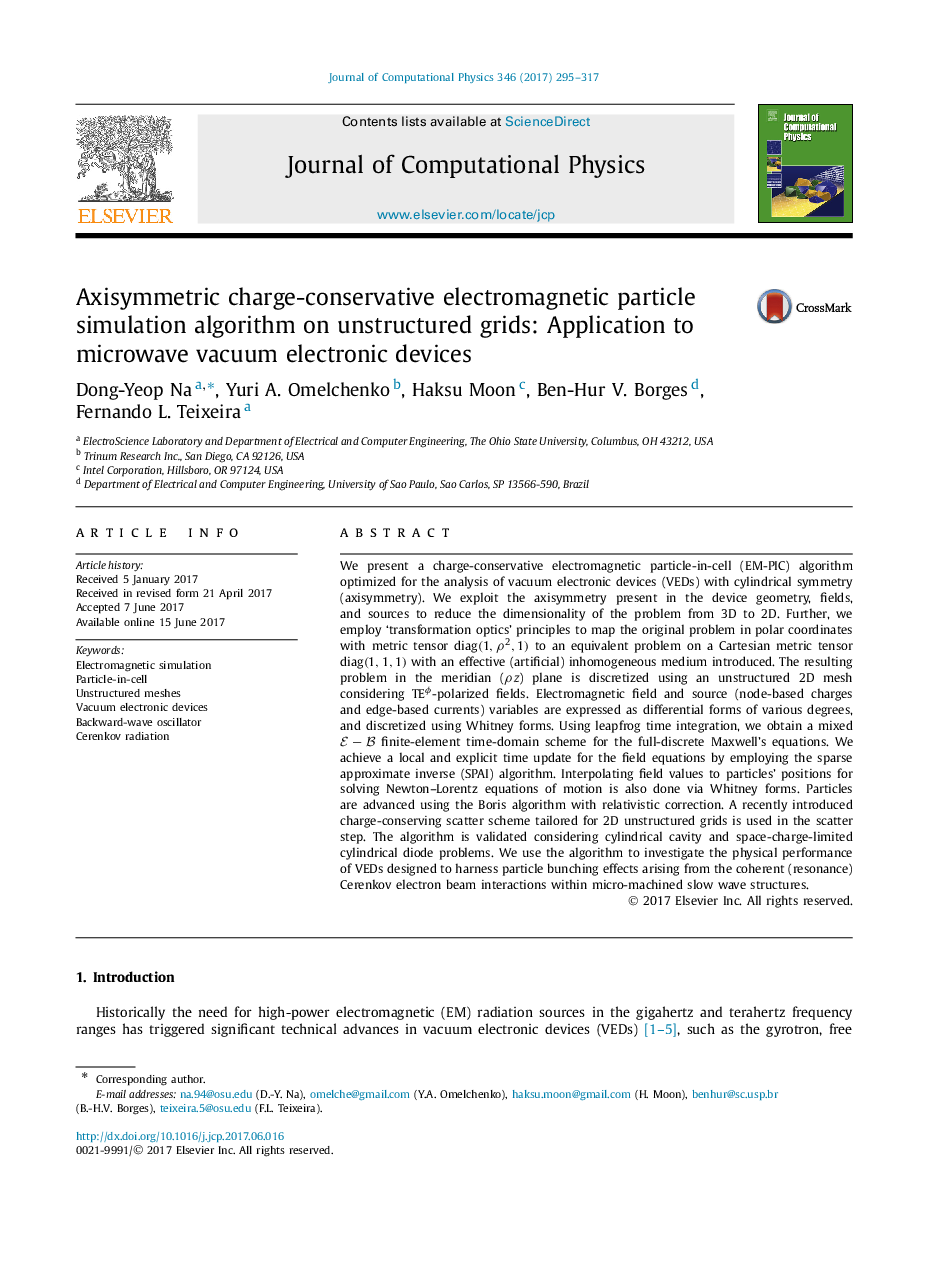| کد مقاله | کد نشریه | سال انتشار | مقاله انگلیسی | نسخه تمام متن |
|---|---|---|---|---|
| 4967261 | 1449367 | 2017 | 23 صفحه PDF | دانلود رایگان |
عنوان انگلیسی مقاله ISI
Axisymmetric charge-conservative electromagnetic particle simulation algorithm on unstructured grids: Application to microwave vacuum electronic devices
ترجمه فارسی عنوان
الگوریتم شبیه سازی الکترومغناطیسی متشکل از شارژ محافظه کارانه بر روی شبکه های بدون ساختار: استفاده از دستگاه های الکترومغناطیسی مایکروویو
دانلود مقاله + سفارش ترجمه
دانلود مقاله ISI انگلیسی
رایگان برای ایرانیان
کلمات کلیدی
شبیه سازی الکترومغناطیسی، ذرات در سلول، شبکه های غیر ساختاری، دستگاه های خلاء الکترونیکی، نوسانگر عقب، تابش چرنکوف،
موضوعات مرتبط
مهندسی و علوم پایه
مهندسی کامپیوتر
نرم افزارهای علوم کامپیوتر
چکیده انگلیسی
We present a charge-conservative electromagnetic particle-in-cell (EM-PIC) algorithm optimized for the analysis of vacuum electronic devices (VEDs) with cylindrical symmetry (axisymmetry). We exploit the axisymmetry present in the device geometry, fields, and sources to reduce the dimensionality of the problem from 3D to 2D. Further, we employ 'transformation optics' principles to map the original problem in polar coordinates with metric tensor diag(1,Ï2,1) to an equivalent problem on a Cartesian metric tensor diag(1,1,1) with an effective (artificial) inhomogeneous medium introduced. The resulting problem in the meridian (Ïz) plane is discretized using an unstructured 2D mesh considering TEÏ-polarized fields. Electromagnetic field and source (node-based charges and edge-based currents) variables are expressed as differential forms of various degrees, and discretized using Whitney forms. Using leapfrog time integration, we obtain a mixed EâB finite-element time-domain scheme for the full-discrete Maxwell's equations. We achieve a local and explicit time update for the field equations by employing the sparse approximate inverse (SPAI) algorithm. Interpolating field values to particles' positions for solving Newton-Lorentz equations of motion is also done via Whitney forms. Particles are advanced using the Boris algorithm with relativistic correction. A recently introduced charge-conserving scatter scheme tailored for 2D unstructured grids is used in the scatter step. The algorithm is validated considering cylindrical cavity and space-charge-limited cylindrical diode problems. We use the algorithm to investigate the physical performance of VEDs designed to harness particle bunching effects arising from the coherent (resonance) Cerenkov electron beam interactions within micro-machined slow wave structures.
ناشر
Database: Elsevier - ScienceDirect (ساینس دایرکت)
Journal: Journal of Computational Physics - Volume 346, 1 October 2017, Pages 295-317
Journal: Journal of Computational Physics - Volume 346, 1 October 2017, Pages 295-317
نویسندگان
Dong-Yeop Na, Yuri A. Omelchenko, Haksu Moon, Ben-Hur V. Borges, Fernando L. Teixeira,
